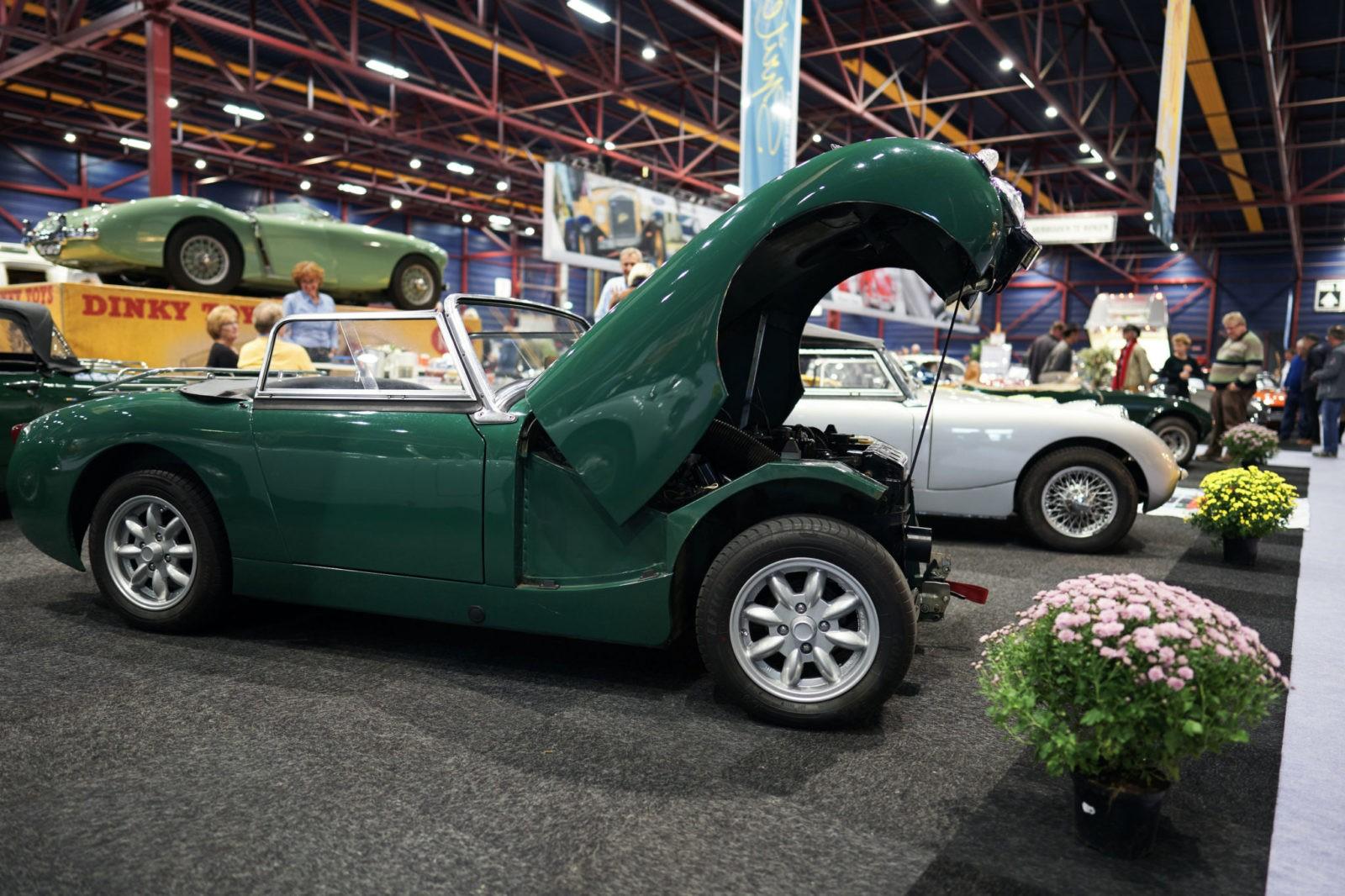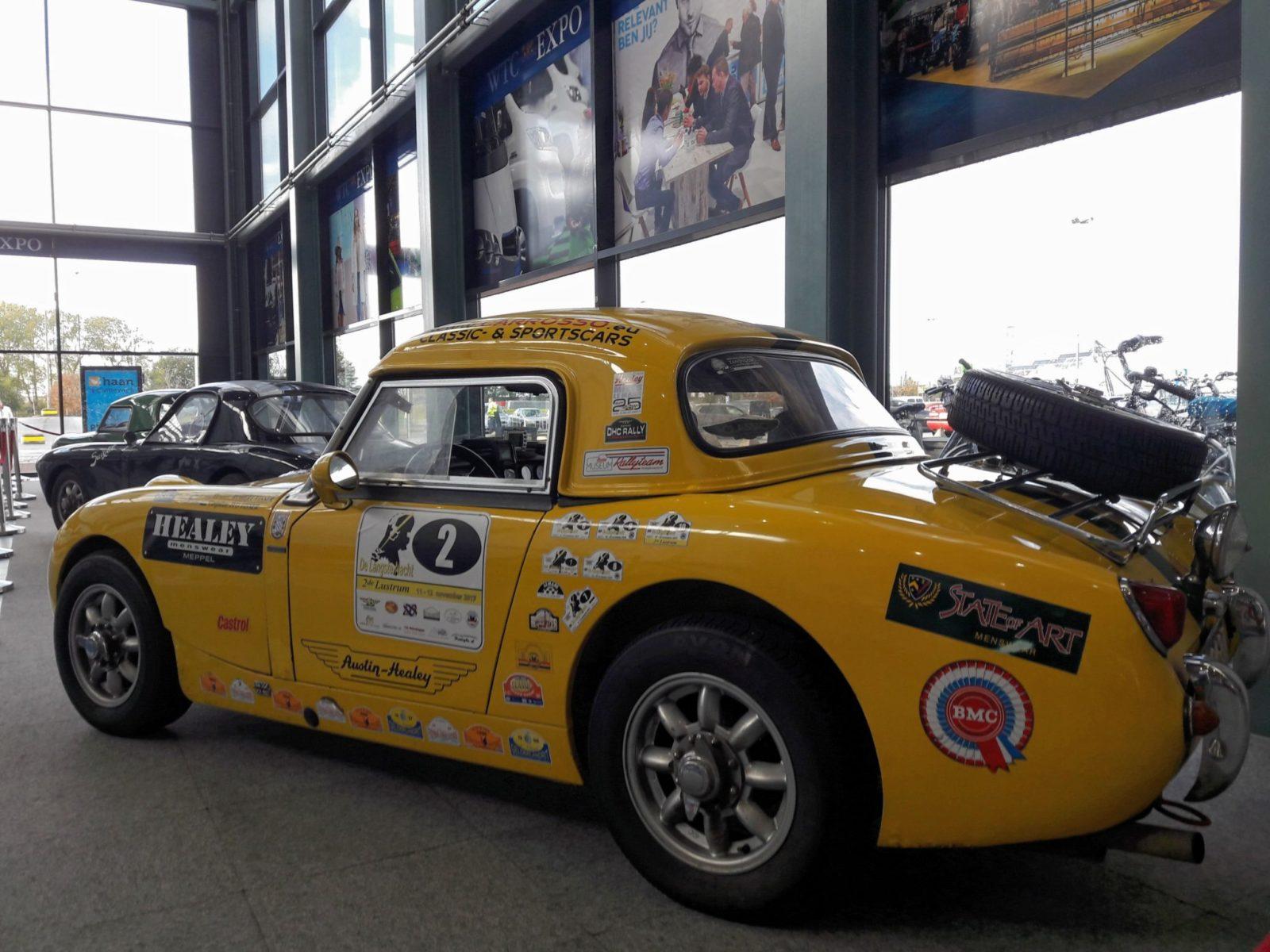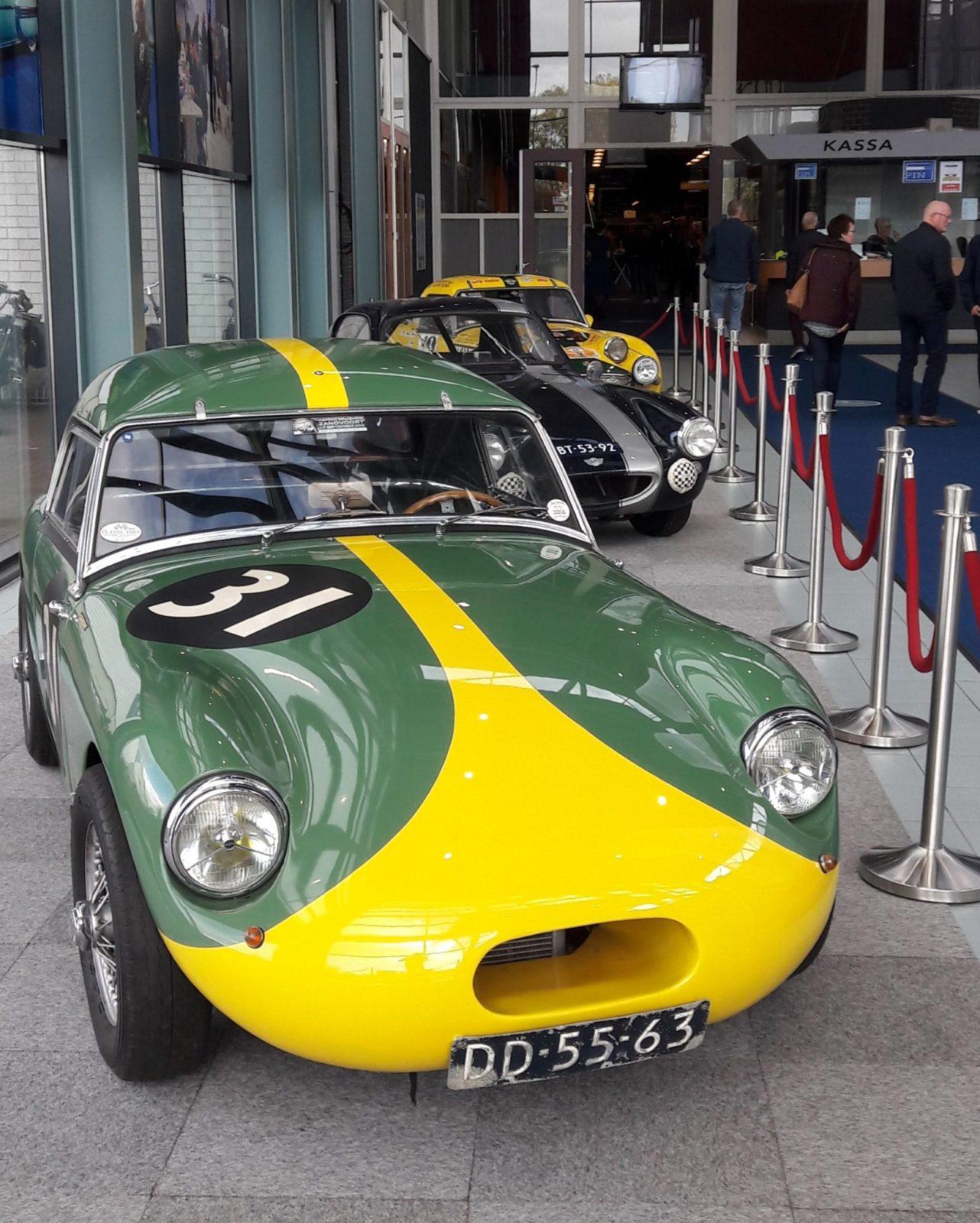In 1958, the illustrious Austin-Healey launched a new, affordable sports car. Leading up to that moment, Leonard Lord and Donald Healey had regular contact and envisioned a bright future for a small two-seater. It eventually came about after the designers first constructed two prototypes. The Austin-Healey Sprite was born. Offered for £669, it was soon acclaimed for its maneuverability. The sports car with the striking front was also loved for another reason. The first series in particular caught the eye thanks to the upright large round headlights.
In the beginning, designer Gerry Coker wanted to provide the Austin-Healey Sprite with 'Pop-Up' lighting, but this was abandoned due to cost and cosmetic considerations. This gave the car – without it being intended that way first – its own face, and the legendary nickname Frogeye. The striking body was fitted with existing BMC technology. The steering gear came for account of the Morris Minor. The Austin A35 donated the rear axle and front suspension and the transmission and the four-cylinder BMC A-series engine. That engine had a displacement of 948 cc. Thanks to the installation of 2 SU carburettors, the power increased from 34 DIN-PK to 42 DIN-PK.
Rare for a sports car: self-supporting body
The new Austin-Healey Sprite had unibody construction, which was rare for a sports car in 1958. In fact, the Sprite was the first mass-produced sports car with such a construction. The front could be opened in one piece. No hinged flap was mounted at the rear. Luggage could only be placed by sliding behind the seats in the luggage compartment: a simple solution. The passenger compartment had a special entry, where the doors had to be opened from the inside. There were no door handles attached to the outside.
Basic equipment, many options
The suspension at the front of the Austin-Healey Sprite consisted of coil springs with so-called arm shock absorbers. At the rear, the Sprite got the rigid rear axle of the Austin A35. Quarter-elliptical leaf springs and (again) arm shock absorbers completed the rear construction. The car was standard equipped with steel rims with ventilation holes and hubcaps with the AH logo. And those who wanted to order spoke rims could contact the Donald Healey Motor Company. Those rims led to, among other things, the shortening of the rear axle. Various extras could also be ordered from the dealer, including a heater (which was not standard at the time!), whitewalls, tachometer or hardtop. The equipment was simple from the factory, Austin-Healey was very keen to keep the weight of the Frogeye as low as possible.
Thankful object for sporty adaptation
There were also possibilities for other technical adjustments, such as the installation of a more powerful braking system. The Austin-Healey Sprite - with its maneuverability, low mass and technique - was a grateful object for sporting adjustments, and also stood its ground in competition. For example, he was a welcome (and award-winning guest) in the Preston Hill Climbs, and also took part in competitions such as the Targa Florio, the Monte Carlo Rally and the Alpine Rally.
Small 50.000 pieces
The Frogeye's career was rather short. From 1958 to 1961, a total of just under 50.000 Frogeyes were produced in Abingdon, UK. Some of these were exported to Australia as kit, and assembled there in Enfield. Today, the Austin-Healey Frogeye Sprite in good condition is an expensive classic, regularly used in historic rallies.
Sebring Sprite
A separate version was the Austin-Healey Sebring Sprite. The Sebring Sprite had, among other things, modified carburetion, Girling disc brakes, a modified body and a double-disc clutch. It was linked to a close ratio gearbox. The car was homologated by the FIA on September 17, 1960 for participation in national and international competitions. After homologation, there was room for the design of several bodies. FIA regulations allowed the use of 'special bodies' and a small number of Sebring Sprites were subsequently fitted with coupé bodies in aluminum alloy and fiberglass. John Sprinzel, who won the 1959 British Rally Championship, was among those involved. He asked Williams & Pritchard, who specialize in racing and prototypes, to produce a few carriages. Other manufacturers were also involved in the body construction of this specific Sprite.









In one of the older wheeler dealers (still with Ed) they fix one up.